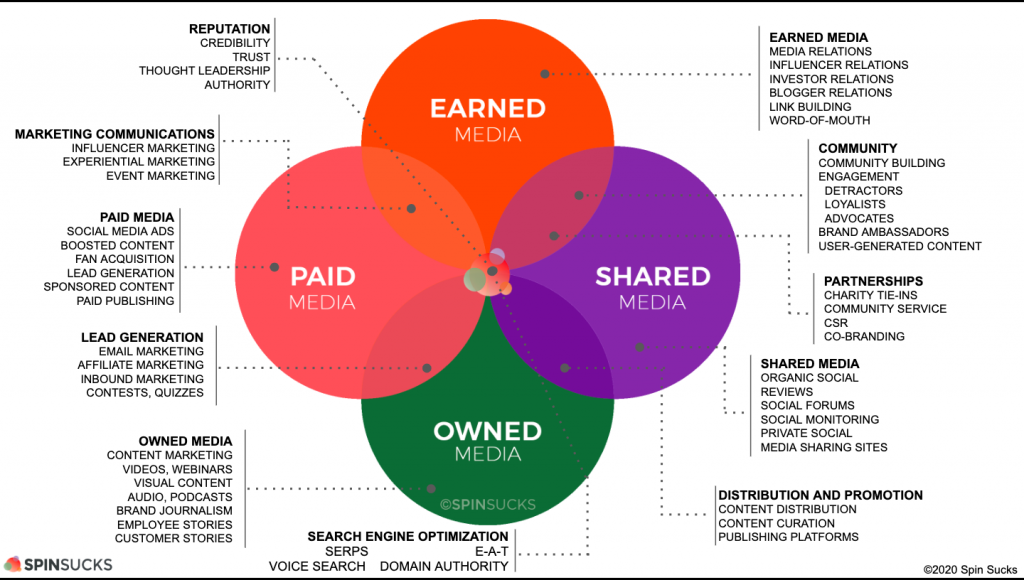Building a brand is a superpower. Master it and you’ll print cash in the long run.
No one ever became a champion weightlifter by going to the gym one time. It takes years of training, diet, dedication, perseverance and building habits that support your goals. Champions use every tool available to them to become the best – professional trainers, nutrition, sleep, stretching, and resting – day in, day out.
You don’t see the daily grind they go through; you just see the results. The same goes for building a brand. Yes, you can go viral with just one tweet in today’s digital age, but most brands aren’t so lucky. Most brands start with nothing and need to grind every day to build awareness. Once you get to the top, everyone wants to be like you. They put a target on your back and ask, “how can we beat them?”
And it can be hell to keep going when you see no results early on. But persistence is a hell of a trait. Your efforts will pay off in the long run and drive your business goals.
Why is brand awareness important?
Brand awareness helps keep your brand top-of-mind with your audience. People who know your brand can become familiar and comfortable with it. Then, when they’re deciding to buy from you or your competitor, they are more likely to buy from you. But getting to this stage takes a lot of time and consistent effort. Brand awareness is top-of-the-funnel marketing where brands can grab attention with a positive experience and inspire consumers to seek more information.
The most successful brands use every tool in their toolbox to build awareness.
Marketing expert Dr. Jeffrey Lant developed “The Rule of Seven” – a marketing principle that says it takes seven “touches” before someone will act upon your call to action. One Google Ad, newsletter, or press article isn’t enough to drive conversions. People need multiple touchpoints with your brand before they convert.
The most successful brands use every tool in their toolbox to build awareness. They use a combination of PR, SEO, paid ads, guest blogs, forums, and everything in between to create a familiarity that will bring their brand top of mind.
Let me explain why most brands suck at brand building and how you can take yours to the next level.
Fail: Not taking a holistic approach to communications
Fix: Eating a healthy PESO diet
It doesn’t matter how big or small your company is – you need to take a holistic approach to your communications.
The PESO Model maps out the four areas of the whole marketing spectrum – Paid, Earned, Shared, and Owned – and merges them together. Successful companies utilize each of these areas simultaneously to create awareness, trust, credibility, and build their reputation.
Ignoring one area of communications is like skipping leg day.
Ignoring one area of communications is like skipping leg day – you’ll have ripped blog arms but tiny twigs for media coverage legs.
Unfortunately, the most common casualty in the PESO spectrum is PR – many companies treat PR as a “nice to have” instead of an equal priority. It gets left by the wayside, and all marketing efforts go into Paid, Shared and Owned.
And I get it. PR is really hard to do if you’re wearing a million hats and a task list longer than your arm. It takes a lot of time to build relationships with journalists and tell newsworthy stories that go beyond your product.
The full PESO model is extremely comprehensive, with hundreds of different channels and tactics you can use – but your brand doesn’t need to do everything. You just need to perform some activities in every area to wholesomely build your brand awareness, trust, and credibility.

Credit: Spin Sucks
Fail: Lack of storytelling and purpose-driven content
Fix: Focus on the problem, not the feature
Today’s consumers are overwhelmed with content. This means, especially online, trust is low and skepticism is high – we’ve learned to filter out ads and posts we don’t like in less than two seconds, continuing to scroll to find content we love. This makes storytelling the most important skill you need to learn to capture interest, hold it, and inspire them into action.
The human brain is designed for stories – it’s how we’ve communicated with each other since we were cave people. Stories are much easier to remember than facts. And stories inspire us to act, make changes, transform, and buy stuff!
So, don’t tell people how good your stuff is. Your consumer doesn’t want better business software that reduces costs by 30%. Dig deeper. Show them the problem you faced, and how you solved it. Then explain how they can go through the same transformation. Build your content around their problems.
Here’s a good storytelling framework I like to use:
- Hook – grab attention and drive curiosity.
- Lesson – teach them something new.
- Emotion – make it relatable to them and their problems – people have to see themselves as the character to connect with the copy.
Did you notice how nothing I said earlier mentioned anything about your product’s features? Features, guides, etc. are all bottom-of-the-funnel marketing content types when you have the stakeholder’s interest – don’t use them in the awareness stage and expect people to care.
Fail: Being inconsistent with your brand
Fix: Train each muscle little and often
An ad hoc approach to marketing and PR kills any momentum you may generate, as people can forget about you quickly. Every time you’re not doing something, your competitor is. A systematic strategy will help you continuously build awareness over the long term.
The best approach is to match the right story to the right target group in the right marketing channel and build credibility piece by piece. Tell stories that support different parts of your mission. Each story is an additional piece of the puzzle that readers can find online and fully understand what you’re trying to achieve.
Create a content strategy and calendar that you stick to. Map out your PESO channels and figure out how to utilize each one with the resources you have.
Then start to create content that works for every stage of the customer journey.
Case study – how Brinter 3D-printed its muscle strength
If you can’t make it to the gym, 3D print your muscles instead.
But seriously, what if we could 3D print human organs for those that need transplants? What if we could print a human brain…?
Have I caught your attention now?
This is precisely the story Finland-based 3D bioprinting scaleup Brinter told when it received €1.2M in VC funding in mid-2021. In their press release, Brinter even got an external quote from their university partner saying, “I am extremely excited to continue our 3D brain printing project with Brinter.”
Brinter took a highly complex concept – 3D bioprinting – and boiled it down to just a few impactful words that intrigue and are easy to understand. But then it balanced this type of storytelling with scientific information that its target audiences – pharmaceutical companies, hospitals, universities, and research centers – want to hear to understand the full capabilities of this technology better.
Stories inspire us to act, make changes, transform, and buy stuff!
The company publicly announced its funding and got over 25 international media hits about its funding, vision, and external partnerships. It leveraged this story on its social media, put it at the center of its website, and repeats this message at every event.
The company has slowly been building its presence and strength with monthly marketing and PR, to the point where it is now listed in the top 3D bioprinting startups in the world. Since June 2021, the company has received over 115 media stories in the international media. It has taken its printers on European roadshows to physically demonstrate its capabilities to its target stakeholders, hosted informative webinars, and regularly published scientific papers on the applications of its technology. It’s become a leader in its field.
The bottom line
Brands must recognize the importance of investing marketing money in the whole marketing spectrum (and patience – lots of patience) to develop awareness and create an emotional connection successfully.
While measuring the Return On Investment from awareness building can be really difficult, there are ways. Utilize metrics like share of search, share of voice, brand sentiment, social engagement, and web traffic to understand how your brand is being perceived.
Building awareness is a superpower – master it, and you can effectively print cash as consumers happily move to the lower stages of the funnel.
 Tim Gilbert
Tim Gilbert
Senior Comms & PR Manager
San Francisco Agency
LinkedIn
Tim loves helping companies tell their unique stories to the world. When he isn’t wordsmithing, he’s playing rugby, acting on stage, or baking some seriously sinful desserts.
Uutiskirjeen tilaajana saat markkinoinnin ja viestinnän uutiset sekä uusimman MRKTNG-lehden ensimmäisten joukossa. Saat myös viikottain koulutuksistamme kerättyjä vinkkejä käyttöösi sekä tietoa järjestämistämme koulutuksista.

